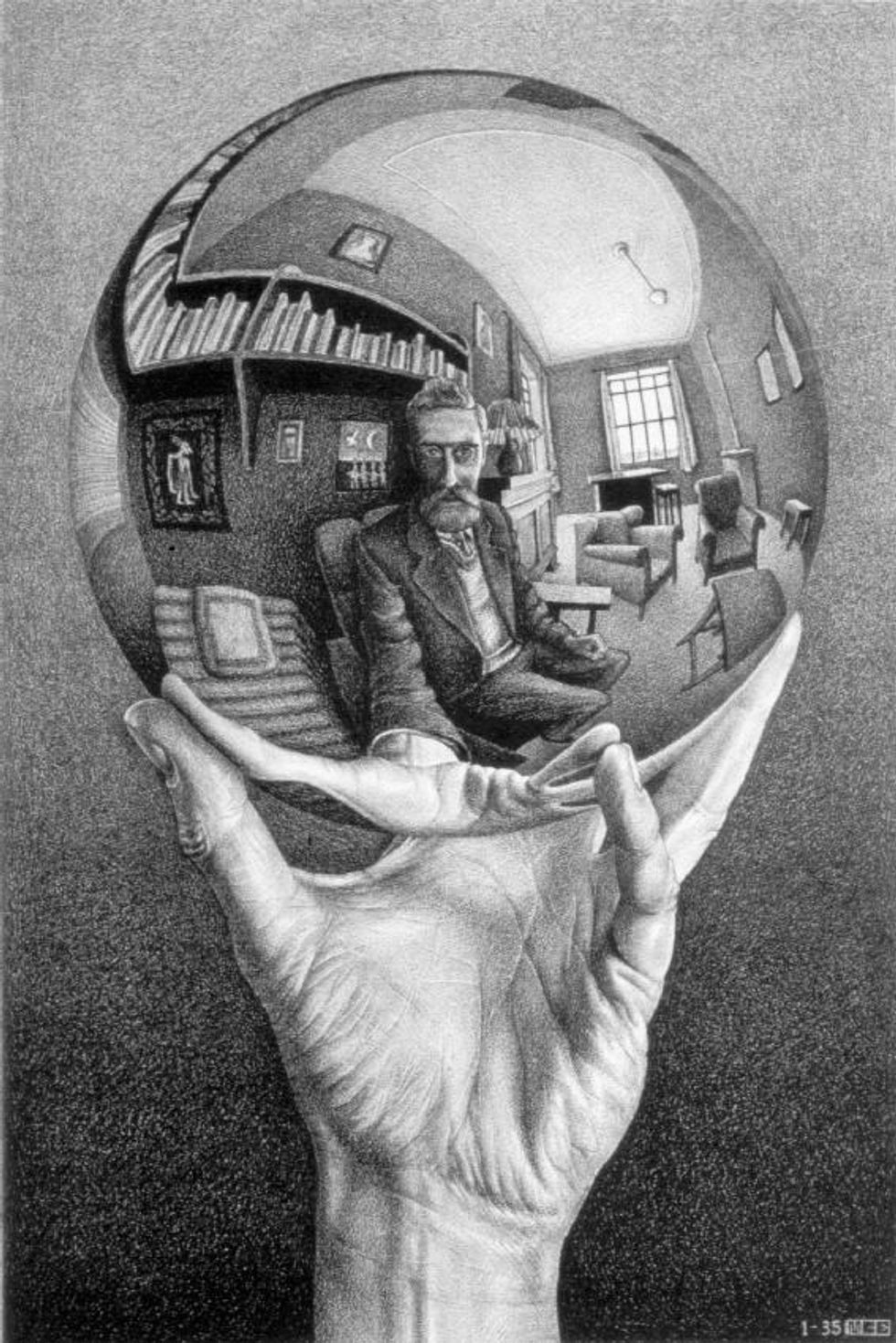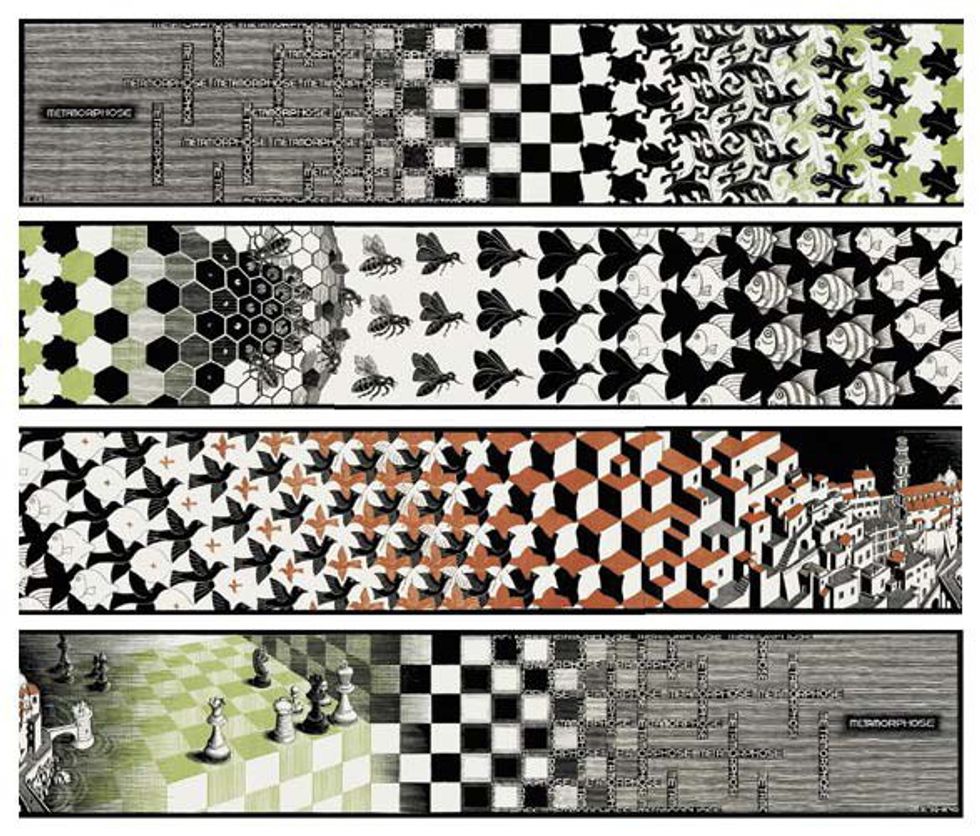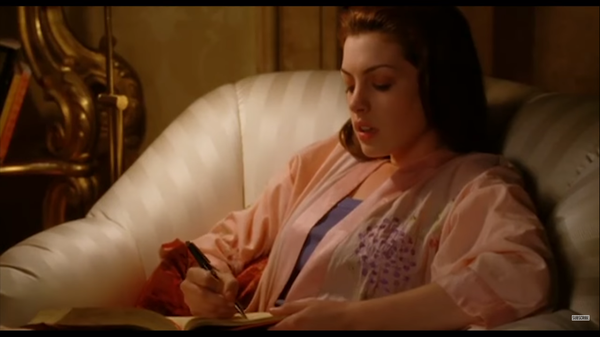Art can be a transformative experience for the those observing it. That statement holds even more validity when you get the chance to see an artist’s work up close, in the flesh. So on Dec. 26, 2015, I gathered a small group of artistically devout friends, and took a trip south of Orlando, to The Dali Museum in St. Petersburg, Florida, to view the renowned artwork of M.C. Escher. Comparatively, Escher, much like Salvador Dali himself, bent the lines of the imagination by rearranging the viewer's visual orientation, while viewing his artwork.
Through woodcuts, lithographs, drawings and wood engravings, Escher’s work is unrivaled and unlike any other illustrator of his time. Pieces like "Still Life and Street" and "House of Stairs" take the observer into disorienting dreamscapes that question the very reality within the scene. Other works like "Other World" show the meticulous detail within the engraved wood that Escher hand crafted. These pieces played with the viewer’s perception of perspective and space, all while bewildering the viewer. Escher used tessellation technique which can be seen in "Verbum" and other pieces from his transformative collection that would later gain respect beyond the art industry, from mathematicians and scientists of the 20th century. Escher would even move into the use of personal perspectives given to him through reflective spheres and mirrored images seen in his well-known lithographs, "Hand with Reflecting Sphere" and "Drawing Hands," which add the artist’s personal perspective to the work. Each of the mentioned pieces of art was displayed for the museum attendees viewing pleasure, during the exhibition.
The exhibit was set to conclude on Jan. 3, 2016. Even though the exhibit had been accessible to the public since Aug. 22, 2015, swarms of art enthusiasts from around the world, were found clustered throughout the gallery that Saturday morning. As I walked into the exhibit, the dim lighting brought a vivid presentation of Escher’s early work. Although there would be 10 or more museum attendees surrounding a piece at one time, I would lose focus on the buzzing people around me, and found myself lost in the details of Escher’s work. Realistic landscapes, with eerie scenes captured my attention as I floated through the gallery, separated from my group of friends. Knowing we were all experiencing the same artistic bliss, I didn’t worry if I was missed. We were all getting a personalized glimpse into the mind of M.C. Escher.
As the artwork progresses through the gallery, a timeline of Escher’s life is given for the spectators to bridge the gap between his artistic endeavors and his life experiences, like a breadcrumb trail left for us to find our way into his thoughts and feelings about the world that was changing all around him. I wasn’t expecting — although, I welcomed it with open arms — to become as dumbfounded as I was when "Metamorphosis II" came into my line of sight. I’ve never had such a transfixed reaction to a piece of artwork before.
Printed from 20 woodcut blocks, "Metamorphosis II" stretches over 12 feet. Beginning from the left, the piece begins with fine lines that frame the repeated word "metamorphose." The Dutch word is repeated and intersects with itself, until boxes that contain shaded lines appear, to then fade into solid blocks of a black and white checkerboard. Tessellation technique becomes more vigorous within the artwork as the checkerboard print begins to transform into unidentified shapes, which later reveal continuous detailed depictions of a reptile, which eventually fade into rough illustrations of hexagons. Those hexagons then turn into precise six-sided geometric shaped honeycombs, where bee larvae appear. As the piece continues the larvae grow, and full grown bees are found on the edges of the honeycomb shapes. The directions of the bees change as multiple bees then fly from the hive, towards the right, into a less detailed mosquito shaped insect, that merges and transforms from the less perfected, to a more detailed illustration of a fish that is swimming towards the left.
These images resemble attributes of the checkerboard. As the different species of life, blend from one direction to the next, an oppositional trend can be seen in both directions, which create a vibrant effect of movement to the artwork. The fish then transform into a depiction of birds that are flying towards the right of the frame, as smaller, red colored birds, fly towards the left. The red colored birds grow in size, from small to large, as your eyes move from left to right. The red and white birds then blend into abstract shapes that create 3-D blocks, which then convert into the shape of multiple buildings that are stacked on top, and next to each other. As the buildings become more detailed and stretch towards the right of the frame, the illustration of the buildings ends as a dark sea appears. There is as a tower that is placed in the illusion of a dark sea, which then connects to the buildings with a bridge. The tower and the structures following, resemble pieces from a chess game, which are then positioned on a checkerboard, with vertical lines that fill the chessboard design. This board creates an illusion of edges and height as your eyes continue to follow the artwork towards the right. Then, as it did in the beginning, the same black and white checkerboard appears, to once again fade into lined intersections of the repeated Dutch word, metamorphose.
There was nothing that I had ever laid my eyes on prior to seeing "Metamorphosis II" that I could compare to this piece of artwork. I began to study each portion in detail. I sat on the bench in front of woodcut print and moved my head in the same direct, from left to right, right to left, until I had to get a closer look. I stood up and position my face as close to the illustration, as deemed accepted by the security guards, and gazed at the image as if I was studying every transition. I had to pull myself away from the artwork after staring and studying it for over 20 minutes, so I could continue strolling through the rest of the gallery. "Metamorphosis II" left a huge impact on me that day. When I closed my eyes, I felt as if I could see those transitions taking place in a static darkness behind my eyelids. The shapes shifted as each frame progressed through my imagination. True art — although, more of a subjective perspective on what art is or is not — imprints onto the observer. If the artist has had the success of eliciting an emotional response, or creating new insight into an unimagined thought process, they have done more than many that have tried to encourage, through visual representations of art. M.C. Escher forged a desire to see beyond this world’s reality, and for that I am fortunate to have had the opportunity to experience his perspective, even decades after his death.
“He who wonders discovers that this in itself is wonder.” -- M.C. Escher






















